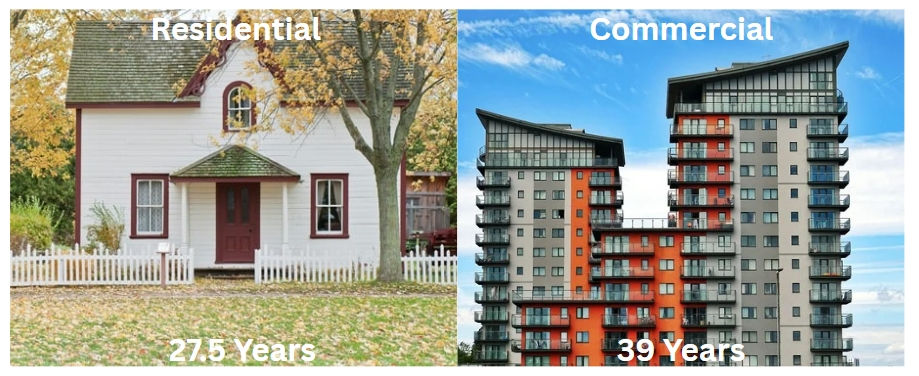Depreciation Demystified: How NYC Investors Use Property Wear and Tear to Reduce Taxes
- gary wang
- Apr 23
- 4 min read
When investing in New York City real estate, understanding depreciation is key to maximizing your after-tax returns.
In simple terms, depreciation is the IRS’s recognition that buildings deteriorate over time due to wear, tear, and obsolescence—even if your property’s market value is increasing.
This “loss of value” can be deducted from your taxable rental income, putting more money back in your pocket.
🧱 What Depreciation Actually Covers
You can’t depreciate the entire cost of a property—just the building and its improvements (not the land).
What’s depreciable:
The structure itself
Roofing, plumbing, HVAC systems
Appliances and fixtures
Renovations or capital improvements
What’s not depreciable:
The land the property sits on
Landscaping
Personal property not used for rental income
🏢 The IRS and Depreciation: MACRS
The IRS uses a system called the Modified Accelerated Cost Recovery System (MACRS) to determine how depreciation is calculated for real estate.
💼 Key MACRS Rules:
Property Type | Recovery Period | Depreciation Method |
Residential rental | 27.5 years | Straight-line |
Commercial property | 39 years | Straight-line |
*Residential properties are any building with 4 residential units or less. Commercial properties is everything else besides land investments.
🔁 How It Works:
You begin depreciating a property when it’s placed in service—i.e., when it's ready and available to rent, not when you purchase it. From there, you deduct a portion of the building’s cost every year for the allowable term.
📊 Real NYC Example: Using MACRS
Let’s say you purchase a 4-family rental in Brooklyn for $2,000,000. After an appraisal:
Depreciable Basis = Cost Basis - Land Value
Land value = $500,000
Cost Basis = Purchase Price + Improvements + Closing Costs = $1,500,000
Yearly Depreciation = Depreciable Basis / MACRS
Using MACRS for a residential property: $1,500,000 ÷ 27.5 = $54,545 per year in depreciation.
This annual deduction lowers your taxable income—potentially saving thousands in taxes.

🧩 Supercharge Your Deductions with Cost Segregation
Depreciation doesn’t have to be slow and steady.
With cost segregation, you can front-load depreciation by identifying property components that can be depreciated over shorter time spans—5, 7, or 15 years—rather than 27.5 or 39.
✅ Few Eligible Assets for Accelerated Depreciation:
Appliances and cabinetry (5 years)
Flooring and carpeting (5–7 years)
Landscaping or fencing (15 years)
Electrical and plumbing for specific equipment (7–15 years)
🧠 Why NYC Investors Should Consider It:
NYC properties tend to be high-value, and renovations are common. A cost segregation study can help you:
Increase cash flow early
Decrease your tax liability
Free up funds to reinvest
⚠️ Heads-Up:
Cost segregation requires a formal study by a qualified engineer or CPA. It typically makes sense for properties over $500,000 in value or those with significant renovations.
🧾 Don’t Forget Depreciation Recapture
While depreciation helps now, it can cost you later—unless you plan ahead.
When you sell a depreciated property, the IRS may impose a recapture tax on the amount you’ve deducted.
📉 Recapture Tax Details:
Taxed as ordinary income, up to 25%
Only on the depreciation amount claimed
Can often be deferred via a 1031 Exchange
🛠️ How to Maximize Depreciation in NYC
Here’s how to make depreciation work for you:
📌 Step-by-Step Guide:
Determine building vs. land value at purchase
Use MACRS to start depreciating
Conduct a cost segregation study if it’s a high-value or renovated property
Track improvements for future depreciation
Work with a CPA familiar with NYC real estate
Strategize for recapture or 1031 exchanges
Bonus Depreciation & Section 179
If you’re investing in commercial or mixed-use property in New York City, you may be able to accelerate your tax savings even further using Bonus Depreciation and Section 179 expensing—especially when renovating or upgrading.
💸 Bonus Depreciation (IRC Section 168(k))
Under recent tax law changes (including the Tax Cuts and Jobs Act), investors can immediately deduct up to 100% of the cost of eligible improvements in the first year—instead of spreading them out over time.
✅ Applies to:
Personal property with a useful life of 20 years or less
Items like security systems, lighting, HVAC components (if not part of structural building)
⚠️ Note: The 100% deduction began phasing out after 2023:
80% in 2023
60% in 2024
40% in 2025
20% in 2026
Ends in 2027 (unless renewed by Congress)
For NYC investors renovating retail storefronts, office spaces, or apartment common areas, this can significantly reduce taxable income in the year of improvement.
🧾 Section 179 Expensing
Section 179 lets you deduct the full cost of certain non-structural improvements or equipment in the year they’re placed in service—instead of depreciating them over several years.
✅ NYC examples include:
Installing surveillance systems in a Manhattan office building
Adding new signage to a Brooklyn storefront
Upgrading office furniture in a Queens mixed-use space
🔍 Key difference from Bonus Depreciation: Section 179 is limited to active businesses (e.g., a real estate business actively operating within the space), while Bonus Depreciation is typically broader and can apply to passive investors as well.
💬 Final Thoughts: Depreciation = Strategic Wealth
For NYC real estate investors, depreciation is more than just a tax rule—it’s a strategic tool for building wealth, increasing ROI, and optimizing cash flow.
Understanding MACRS and exploring cost segregation can unlock serious savings. Just make sure you work with professionals who understand both local real estate nuances and federal tax law.
📚 Recommended Resources
This blog post is provided for informational purposes only and should not be construed as financial, legal, or investment advice. While I am a licensed real estate professional in New York, I am not a financial advisor, attorney, or tax professional. Readers are strongly encouraged to consult with their own licensed attorney, CPA, or financial advisor before making any real estate investment decisions. All information is deemed reliable but not guaranteed and is subject to change based on market conditions, legal updates, or individual deal circumstances.




Comments